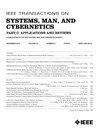Collusion-secure and cost-effective detection of unlawful multimedia redistribution
IEEE Transactions on Systems Man and Cybernetics Part C-Applications and Re
Pub Date : 2003-08-01
DOI:10.1109/TSMCC.2003.817351
引用次数: 9
Abstract
Intellectual property protection of multimedia content is essential to the successful deployment of Internet content delivery platforms. There are two general approaches to multimedia copy protection: copy prevention and copy detection. Past experience shows that only copy detection based on mark embedding techniques looks promising. Multimedia fingerprinting means embedding a different buyer-identifying mark in each copy of the multimedia content being sold. Fingerprinting is subject to collusion attacks: a coalition of buyers collude and follow some strategy to mix their copies with the aim of obtaining a mixture from which none of their identifying marks can be retrieved; if their strategy is successful, the colluders can redistribute the mixture with impunity. A construction is presented in this paper to obtain fingerprinting codes for copyright protection which survive any collusion strategy involving up to three buyers (3-security). It is shown that the proposed scheme achieves 3-security with a codeword length dramatically shorter than the one required by the general Boneh-Shaw construction. Thus the proposed fingerprints require much less embedding capacity. Due to their own clandestine nature, collusions tend to involve a small number of buyers, so that there is plenty of use for codes providing cost-effective protection against collusions of size up to three.合谋——安全且经济的非法多媒体再分发检测
多媒体内容的知识产权保护对互联网内容交付平台的成功部署至关重要。有两种一般的多媒体拷贝保护方法:拷贝预防和拷贝检测。过去的经验表明,只有基于标记嵌入技术的复制检测才有前景。多媒体指纹识别意味着在出售的多媒体内容的每个副本中嵌入不同的买家识别标记。指纹识别容易受到串通攻击:一个买家联盟串通并遵循某种策略,将他们的副本混合在一起,目的是获得一种混合物,从中无法检索到他们的识别标记;如果他们的策略成功了,共谋者可以不受惩罚地重新分配这些混合物。本文提出了一种构造,该构造可以在任何涉及最多三个买家(3-security)的合谋策略下获得版权保护的指纹码。结果表明,该方案实现了3级安全,且码字长度明显短于一般Boneh-Shaw结构所需的码字长度。因此,所提出的指纹需要更少的嵌入容量。由于其本身的秘密性质,串通交易往往涉及少数买家,因此有大量使用代码提供经济有效的保护,以防止规模达三个的串通交易。
本文章由计算机程序翻译,如有差异,请以英文原文为准。
求助全文
约1分钟内获得全文
求助全文
来源期刊
自引率
0.00%
发文量
1
审稿时长
3 months

 求助内容:
求助内容: 应助结果提醒方式:
应助结果提醒方式:


